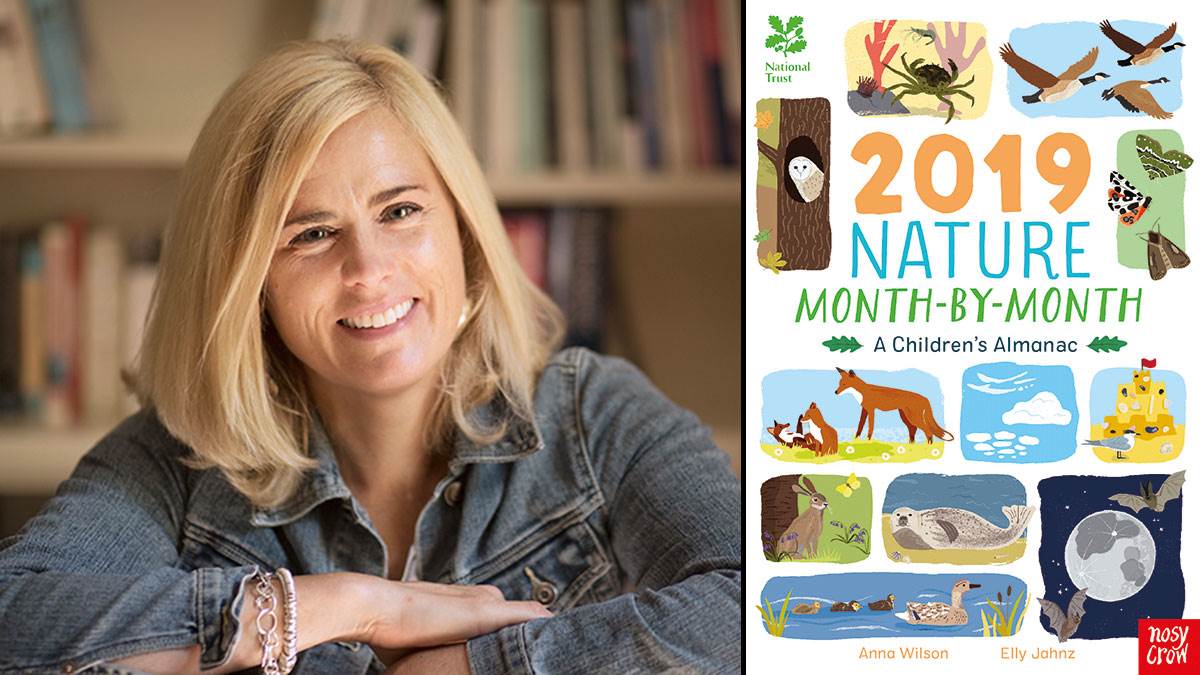How to make the most of January: Fun nature activities for you and your children
Published on: 14 Ionawr 2019 Author: Anna Wilson
It's easy to feel like hibernating in January, but why not make the most of the new year? Anna Wilson - author of the National Trust's new 2019 Nature Month-By-Month almanac for children - shares her tips for getting outside and having fun with your family in the winter months...

You will often hear people talk about January as though it is the worst of all the months. The days are so short and grey and the weather is damp and can make us feel miserable.
But rest assured, wherever you live you'll be able to find lots of things to get excited about in January. Yes, it's cold outside, but if you wrap up warm you can still enjoy walks and games and activities in the garden or park - or even by the sea.
1. Spot some wildlife
It can be very hard to get up in the mornings in January. The sun doesn't seem to appear until school has begun - if it appears at all! But the dark mornings can be an exciting time for spotting wildlife. Even if you are not lucky enough to see an animal or bird, you might hear one instead if you listen hard.
2. Start a nature journal
Why not start a nature journal and write down what you see and hear? Owls become very noisy at this time of year - you might catch sight of the large, silent shape of a tawny owl or a barn owl flying past you on your way to school. Foxes and badgers are busy at this time of the year too - they have to work hard to find food to keep them alive through the cold winter. Sometimes you can see them knocking over rubbish bins in their search for food.
3. Look out for signs of new life
If you go out into the garden, the park or the woods near where you live, you will see signs of new life even on the darkest day. In colder northern regions, plants take longer to appear, but down in the south you might see daffodils as early as 1 January.
Snowdrops are already in bloom by now. Their tiny white and green heads look so delicate but they are strong enough to survive the coldest weather - even snow and ice!
Other plants are quietly peeping out of the damp dark ground too. Hazel catkins can be seen hanging from the trees even before the leaves start to show their shoots. And sometimes little yellow primroses start to appear now as well.
4. Head to the beach
What about a trip to the seaside? It may not be an obvious place to go for a holiday or a day trip in the winter time, and it's a bit chilly for swimming and making sandcastles or sunbathing.
However, you can still hunt for shells and pebbles, seaweed and fossils, and you can look out for interesting seabirds and other creatures.
A blustery coastal walk can be a lovely thing to do on a grey January day. There are grey seals and common seals to be seen along the whole of the UK coast. In Cornwall and Wales you might also see porpoises. Along the seashore in Scotland, Northumberland, Yorkshire, Northern Ireland, and Wales you will be able to see puffins.
5. Stay hopeful
So take heart during the short, dark days. The January festivals of Wassail, Twelfth Night, Lohri and Tu B'Shevat show us that this is a month of hope and looking forward to new things. Nature is doing its best to give us hope too.
The National Trust Children's Almanac 2019 by Anna Wilson, illustrated by Elly Jahnz, is out now, published by Nosy Crow.
Topics: Animals, Environment, Nature, Features






Add a comment